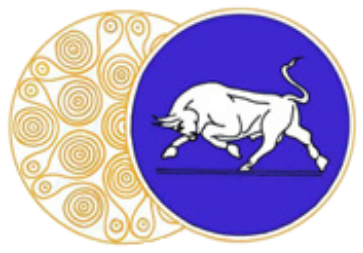The Priniatikos Pyrgos Project
Priniatikos Pyrgos was a highly successful settlement, and that is what makes it both rare and interesting in the archaeology of Crete. Ever since the first widespread settlement of the island over 5000 years ago during the Final Neolithic, people kept coming back to this little hillock by the coast within the relatively sheltered Gulf of Mirabello. The excavations were intended to work as a complement to the Vrokastro Survey Project, which provided an extensive model of settlement in the surrounding landscape from prehistoric to recent times.
Our excavations revealed some faint traces of Neolithic activity, but more substantial remains come from the beginning of the Bronze Age. Part of an Early Minoan I was excavated and published in detail. This house had been intentionally destroyed in prehistory and its contents ritually fragmented. Extensive pottery production characterised the Early Bronze Age II period (2700-2200 BC) and the settlement expanded in the time before the first palaces, ca. 2200-1900 BC. We have published a store-room and surrounding architectural elements which were destroyed by fire. During the old Palace period, the landscape was densely occupied, but the focus of activity moved away from Priniatikos Pyrgos. It became a focus of activity again at the time of extensive urbanisation and palace building in Crete ca. 1700 BC, though few features remain apart from well-built schist court area. The site was destroyed and parts covered in water born debris sealed by tephra right at the time of the famous Theran eruption. The site – and indeed surrounding landscape – witnessed a massive decrease in activity. Around 1200 BC the hilltop site of Vrokastro is built and served as the local centre, but it was not until around 700 BC before people returned to build on Priniatikos Pyrgos. It was incorporated into a Classical and then Hellenistic Polis of Istron, though lying in the suburbs of this, and by the Early Byzantine period (sometime after 500 AD), people returned and built substantial, possibly ecclesiastical buildings and graves on the site. This was destroyed when the so-called Arab raiders were raiding the coasts of Crete, and thereafter occupation of the headland was sporadic, including warehouses of the Ottoman period. The site therefore ranged from an important and central village to a suburb of a small city to an ecclesiastical centre to a simple location of storing agricultural produce, but in all times, it played an important role in structuring access to resources of the coast by the surrounding communities. Excavations took place between 2005 and 2010 under the directorship of Barbara Hayden and Barry Molloy.
Publications:
Molloy, B., Pavlacky, M., Day, J., Bridgford, S., Milic, M., Breeckner, D., Klontza-Jaklova, V. 2020. “Faltering Complexity? The Context and Character of Settlement at Priniatikos Pyrgos in EM III-MM IA”, Hesperia 89.2: 215-280
Molloy, B., Day, J., Bridgford, S., Kotzamani, G., Nodarou, E., Issakidou, V., Milić, M., Carter, T., Klontza-Jaklova, V. and Larsson, E. 2014. “Life and death of a Bronze Age house: Excavating Early Minoan I levels at Priniatikos Pyrgos”, American Journal of Archaeology 118.2
B.P.C. Molloy and C. Duckworth (Eds.). 2014. A Cretan landscape through time: Priniatikos Pyrgos and environs. Oxford: Archaeopress

